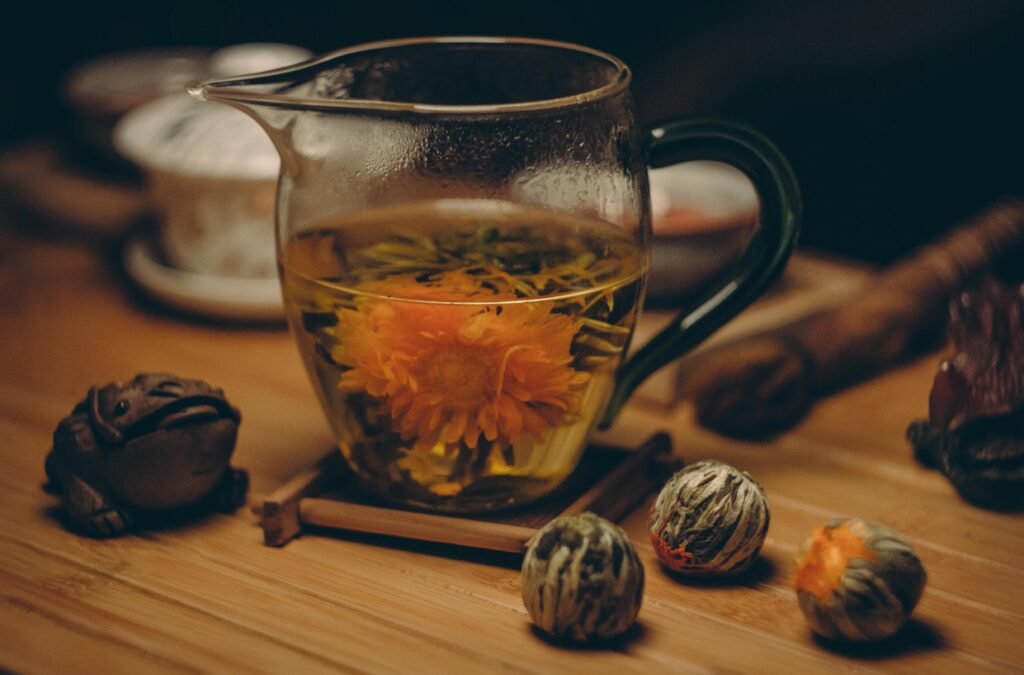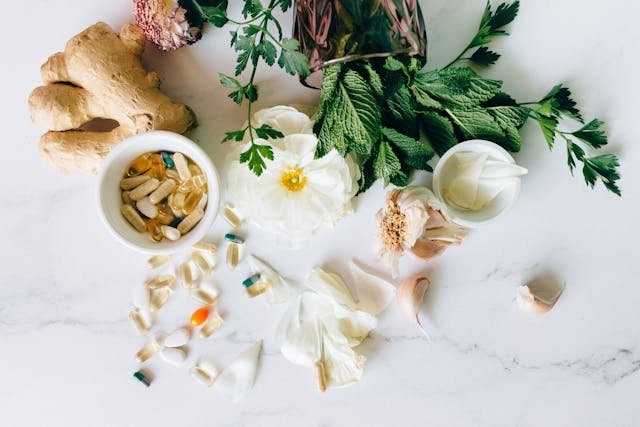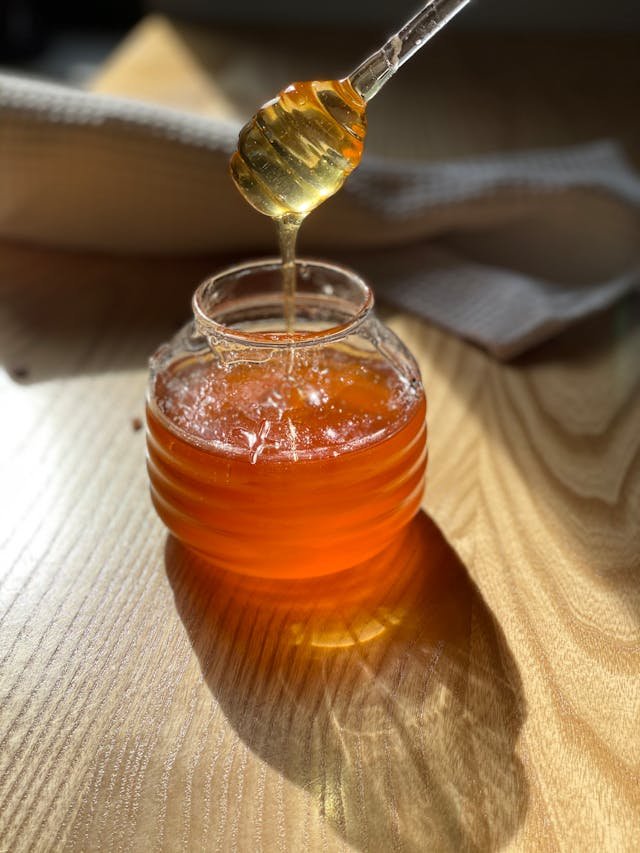Honey has been cherished in traditional medicine for thousands of years. It is valued for its healing properties. In many cultures, honey has been more than a sweetener. It has been a key part of many natural remedies. Honey has played a big role in treating ailments. This has been true from ancient Egypt to modern wellness practices. This article explores the historical uses of honey in traditional medicine. It highlights why honey remains a popular choice for natural healing. We’ll look at how honey has been used, its benefits, and some common remedies that still use honey today.
History of Honey in Medicine
Honey has a rich history in medicine that dates back to ancient times. It has been used for healing and health. This use can be traced in many cultures and times. Here is a closer look at how honey has been valued for its healing properties. This has been true throughout history.
Ancient Egypt
In Ancient Egypt, honey was highly prized. It was used in many ways, including as a medicine. The Egyptians knew about honey’s healing power and used it to treat wounds and burns. They even included honey in their embalming processes to preserve bodies. Ancient Egyptian texts, such as the Ebers Papyrus, are over 3,500 years old. They describe honey’s use in treating infections. It was also used as a soother for coughs and digestive issues.
Ancient Greece
The Greeks also recognized honey’s medicinal value. The famous Greek physician Hippocrates lived around 2,400 years ago. He mentioned honey in his writings. He used honey to treat wounds and to improve digestion. Greek doctors believed honey had special properties. It helped heal the body and boost the immune system. They used it in various treatments. They often mixed it with herbs and oils.
Ancient China
In Ancient China, honey was considered an essential part of traditional medicine. Chinese herbalists used honey in many remedies. It was believed to balance the body’s energy and improve overall health. Honey was commonly used to treat coughs, sore throats, and digestive problems. It was often combined with other herbs and spices to enhance its healing effects.
Indian Ayurveda
In India, honey has been a key component of Ayurveda, which is an ancient system of medicine. Ayurvedic texts, some of which are over 5,000 years old, describe honey as a valuable substance for health. It is used to balance the body’s three doshas (vata, pitta, and kapha) and to treat a variety of conditions. Honey is used to improve digestion, heal wounds, and boost vitality.
Medieval Europe
During the Middle Ages, honey continued to be a popular remedy in Europe. It was used by herbalists and physicians to treat infections, wounds, and coughs. Honey was also used in many medieval recipes for medicines and potions. It was a valued ingredient for its healing properties. People often mix it with other herbs and natural substances.
Modern Times
In recent times, scientists have started to understand why honey is so good as a medicine. Research has shown that honey has natural antibacterial and anti-inflammatory properties. Modern medicine has confirmed many traditional uses of honey. It is still used today to treat wounds and infections.
Benefits of Honey in Traditional Medicine
Honey is not just a sweet treat; it has been valued in traditional medicine for its many health benefits. From ancient times to today, people have used honey to treat a variety of ailments. Here’s a closer look at the key benefits of honey in traditional medicine:
- Antibacterial properties
One of the most significant benefits of honey is its ability to fight bacteria. Honey contains natural substances that can kill harmful bacteria. This is because honey has little water and is highly acidic. This makes an environment where bacteria struggle to survive. When applied to wounds, honey can help prevent infection and speed up healing. Ancient cultures recognized this. Modern science has confirmed that honey treats bacterial infections.
- Anti-inflammatory Effects
Honey has natural anti-inflammatory properties. Inflammation happens when the immune system responds to injury or infection. This response causes redness, swelling, and pain. Honey can help reduce this inflammation. For example, if you have a sore throat or inflamed skin, honey can reduce the swelling and discomfort. This benefit makes honey valuable. It is a remedy for conditions like arthritis, sore throats, and minor burns.
- Soothing for Sore Throats
Honey is well known for its soothing effects on sore throats. It coats the throat. This reduces irritation, which can help stop coughing and discomfort. This soothing action is why honey is often used in teas or taken directly to relieve coughs and colds. Honey calms the throat and reduces coughing. It helps you feel better and recover faster from respiratory infections.
- Healing Wounds and Burns
Honey has been used for centuries to treat wounds and burns. Its natural antibacterial and anti-inflammatory properties help prevent infection and reduce pain. Honey is used on minor cuts, burns, or scrapes. It creates a layer that keeps out bacteria and speeds healing. It also helps keep the wound moist, which can reduce scarring and improve recovery.
- Digestive Health
Honey can support digestive health in several ways. It has prebiotic properties, meaning it helps nourish the good bacteria in the gut. These beneficial bacteria are necessary for a healthy digestive system. Honey can also soothe an upset stomach. It can reduce indigestion symptoms and relieve constipation. Drinking honey mixed with warm water is a common traditional remedy. It’s used for digestive issues.
6. Rich in Nutrients
Honey is not just sweet; it also contains a variety of nutrients that can support overall health. It is rich in vitamins such as B vitamins, and minerals like calcium, iron, magnesium, and potassium. These nutrients can help boost your energy levels and support your immune system. Eating honey can provide essential nutrients and improve your health.
7. Energy Boost
Honey is a natural carbohydrate source, providing a quick energy boost. Honey has sugars like glucose and fructose. The body absorbs and turns them into energy. This makes honey a great option for a natural energy source. It’s especially good for a quick pick-me-up during the day.
8. Skin Health
In traditional medicine, honey has been used in various skincare treatments. It can help moisturize and nourish the skin, making it a popular ingredient in face masks and lotions. Honey’s natural humectant properties attract moisture. They also keep it, which helps keep the skin hydrated. It also mildly exfoliates. This can help remove dead skin cells. It promotes a healthy, glowing complexion.
How Honey is Used in Traditional Medicine

Honey is a versatile remedy in traditional medicine. It can be used in many different ways to treat various health issues. Here’s a detailed look at how honey is used traditionally and the methods of application:
1. As a Natural Sweetener
In traditional medicine, honey is often used as a natural sweetener. Honey, unlike refined sugar, has health benefits from its natural enzymes and vitamins. People use honey to sweeten teas, herbal infusions, and recipes. Replacing sugar with honey is believed to improve health. Honey is more nutrient-rich.
2. For Coughs and Sore Throats
One of the most common traditional uses of honey is to soothe sore throats and reduce coughing. A spoonful of honey can be taken directly or mixed into warm water or herbal tea. It can coat the throat and soothe irritation. Honey’s natural soothing properties help reduce coughing and ease discomfort. This remedy is often used for colds and respiratory infections. It gives relief and hydration.
3. Topical Application for Wounds and Burns
Honey has been applied directly to wounds and burns for centuries. Its natural antibacterial properties prevent infection. Its anti-inflammatory effects reduce swelling and pain. To use honey for wounds, apply a thin layer to the affected area and cover it with a clean bandage. This creates a barrier. It keeps out bacteria and helps healing. For burns, honey can be used in a similar way to soothe the skin and reduce discomfort.
- In Face Masks and Skincare
Honey is a popular ingredient in traditional skincare treatments. Its moisturizing properties make it an excellent choice for face masks. To make a simple honey face mask, apply a thin layer of honey to clean the skin and leave it on for about 15-20 minutes. Honey helps hydrate the skin, remove dead skin cells, and improve overall complexion. You can combine it with other natural ingredients. For example, yogurt or oatmeal. This adds benefits.
- Mixed with Other Ingredients
In traditional medicine, honey is often mixed with other natural ingredients. This is to make its effects stronger. Here are a few popular combinations:
- Honey and Lemon: This mixture is used to soothe sore throats and coughs. Lemon adds vitamin C and extra antibacterial properties. This makes the mix a powerful remedy.
- Honey and Ginger: Ginger is known for its digestive benefits. It helps with nausea, digestion, and the immune system when combined with honey.
- Honey and Cinnamon: This combination is believed to have anti-inflammatory and antioxidant properties. It’s often used to support overall health. It can improve conditions like arthritis or breathing issues.
- For Digestive Health
Honey is used in traditional medicine to support digestive health. People often consume it in warm water. This is to help relieve indigestion or constipation. A common remedy is to mix a spoonful of honey with warm water or herbal tea. This can soothe the gut and aid regular bowel movements.
- As a Natural Energy Booster
Honey’s natural sugars provide a quick source of energy. In traditional practices, athletes and others use honey for an energy boost. Consuming honey before physical activity can help increase stamina and reduce fatigue. It’s also a popular choice for a quick snack or energy bar, especially when mixed with nuts or seeds.
- In Herbal Remedies
Traditional herbal medicine often incorporates honey into various remedies. It can be added to herbal teas and tinctures to enhance flavor and therapeutic effects. For example, honey is sometimes used with herbs like thyme or echinacea. This is to boost the immune system or relieve cold and flu symptoms.
Popular Traditional Honey Remedies

Honey has been a key ingredient in many traditional remedies for centuries. Its natural properties make it effective. It treats many common health issues. Here are some popular traditional honey remedies and how they are used:
- Honey and Lemon Tea
It is honey and lemon tea. It is a simple but effective remedy. People use it to soothe sore throats and reduce coughing.
How to Prepare:
- Boil a cup of water and let it cool a little bit.
- Add one to two tablespoons of honey.
- Squeeze the juice of half a lemon into the tea.
- Stir well and drink while warm.
The mix of honey and lemon coats the throat. It reduces irritation and soothes coughs. Lemon provides vitamin C. It can boost the immune system. Honey has soothing and antibacterial properties.
- Honey and Ginger for Nausea
It is a remedy. It combines honey and ginger. It helps with nausea, digestion, and stomach pain.
How to Prepare:
- Peel and add a small piece of fresh ginger.
- Boil the ginger in a cup of water for about 10 minutes.
- Strain the ginger water into a cup.
- Add one to two tablespoons of honey and stir well.
Ginger has natural anti-nausea and digestive benefits. Honey adds a soothing touch and balances the flavor. This mixture can help settle the stomach and alleviate nausea or indigestion.
- Honey and Cinnamon Paste
It is a paste made from honey and cinnamon. Many people think it has anti-inflammatory and antibacterial traits.
How to Prepare:
- Mix equal parts of honey and ground cinnamon to form a thick paste.
Uses: This paste can be applied to minor cuts, wounds, or blemishes. Honey and cinnamon together are thought to cut inflammation and fight bacteria. It’s also sometimes used as a natural remedy for arthritis by taking a small amount of the paste daily.
- Honey Face Mask
What It Is: A natural face mask made with honey, used for moisturizing and improving skin health.
How to Prepare:
- Apply a thin layer of pure honey to clean, dry skin.
- Leave it on for 15-20 minutes.
- Clean up yourself with warm water and pat dry.
Uses: Honey’s natural humectant properties help to hydrate the skin, making it soft and smooth. It also mildly exfoliates. This can help remove dead skin cells and improve the complexion.
- Honey and Warm Water for Digestion
What It Is: A simple remedy that uses honey mixed with warm water to support digestive health.
How to Prepare:
- Mix one to two tablespoons of honey into a glass of warm water.
Drinking this mixture on an empty stomach in the morning can help digestion. It can relieve constipation and promote regular intestinal movements. The warm water helps the digestive system. Honey has soothing and prebiotic benefits.
- Honey and Apple Cider Vinegar Tonic
What It Is: A tonic made with honey and apple cider vinegar, used for its potential health benefits.
How to Prepare:
- Mix one tablespoon of honey with one tablespoon of apple cider vinegar in a glass of water.
This tonic is thought to help manage weight. It also improves digestion and increases the immune system. Apple cider vinegar adds extra health benefits. Honey balances the strong taste and adds soothing effects.
- Honey and Turmeric for Wound Healing
It is a remedy. It combines honey and turmeric. It is known for their healing and anti-inflammatory properties.
How to Prepare:
- Mix honey with a pinch of turmeric powder to form a paste.
Uses: This paste can be applied to minor wounds, cuts, or burns. Turmeric adds powerful anti-inflammatory and antioxidant effects, while honey provides antibacterial benefits. This combination helps to promote faster healing and lower pain.
- Honey for Relieving Stress
What It Is: A calming remedy using honey to help manage stress and promote relaxation.
How to Prepare:
- Add a tablespoon of honey to a cup of herbal tea, such as chamomile or peppermint.
Uses: Herbal teas combined with honey can help relax the mind and body. Honey soothes naturally. Herbs calm. They can reduce stress and improve sleep.
Conclusion
In short, honey has been a valued remedy in traditional medicine for thousands of years. It spans ancient Egypt, Greece, China, and beyond. It shows its importance across cultures and eras. Honey soothes sore throats and heals wounds. It helps with digestion and improves skin. Its benefits are truly remarkable.
Throughout the article, we explored various ways honey has been used traditionally. We learned how honey is a natural sweetener. It helps relieve coughs and heals skin. We also saw how honey can mix with other ingredients to boost its power. For example, in honey and lemon tea or honey and ginger for nausea. Honey is often mixed with ingredients like cinnamon or turmeric. This mixing highlights its role in traditional remedies.
Reflecting on my own experience, I’ve found honey to be an incredible natural remedy. I remember a time when I had a persistent cough that just wouldn’t go away. A mix of honey and warm water gave relief. It helped me get through the cold season well. Also, I often use honey in my skincare routine. I’ve noticed how it helps keep my skin wet and smooth.
Honey’s benefits are not just a matter of tradition but are supported by modern research. We continue to embrace natural remedies. Honey remains a valuable tool in our health toolkit. You can use honey in teas. You can apply it to the skin. And, you can mix it with other natural ingredients. Honey is a gentle and effective way to support wellness.
If you haven’t already, I encourage you to explore the many uses of honey in your own health routine. Its natural properties and rich history make it great for both traditional and modern medicine.
Frequently Asked Questions
- Is honey effective for treating colds? Yes, honey can help soothe a sore throat and reduce coughing. It is often used in warm tea for this purpose.
- Can honey heal wounds? Yes, honey has natural antibacterial properties. They can help heal small wounds and burns.
- How should honey be applied to wounds? Apply a small amount of honey directly to the wound and cover it with a clean bandage. Change the bandage regularly.
- Are there any side effects of using honey? Honey is generally safe for most people. However, it should not be given to infants under one year old due to the risk of blight.
- Can honey help with digestive issues? Honey may aid digestion and help with problems like indigestion and nausea. It is often used in combination with other ingredients like ginger or lemon.



